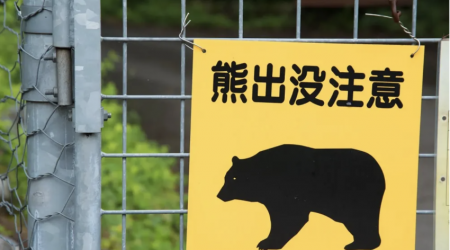The deep sea is considered Earth's final frontier due to its inhospitable, uncharted depths. However, Japan faces the risk of falling behind in exploring this unknown realm, as its aging dark ocean submersible is set to retire.
Shinkai 6500, the Japan Agency for Marine-Earth Science and Technology's manned submersible which can dive 6.5 kilometers deep, is reaching the end of its life span with no prospects of a replacement vessel being developed anytime soon.
The government intends to focus its efforts on developing unmanned submersibles, but researchers strongly argue the value of crewed exploration, especially for investigating deep-sea organisms in real time and due to the efficiency of transporting equipment and personnel to targeted seabed environments in a timely fashion.
About half of Japan's 200 nautical mile exclusive economic zone is deeper than 4,000 meters, and there is extensive deep sea over 6,000 meters below the ocean's surface near the archipelago nation.
After reaching such depths, Shinkai can use its robotic arm to bring back sediment and microorganisms from the seafloor and install materials for use in research.
The submersible not only allows investigation of topography, geology and deep-sea life around Japan, but also in the Pacific, Atlantic and Indian Oceans, and has played a key role in researching large earthquakes.
"The delicate work of pinpointing objects found on-site is possible only due to Shinkai," one researcher said. Since its construction in 1989, Shinkai has made some 1,800 dives.
The key is the lightweight titanium alloy pressure-resistant hull that protects the three-person cockpit from structural collapse. Although a JAMSTEC official stressed that "there is no strain at all, so it is still fine," the vessel will reach the end of its design life in the 2040s.
Even the Yokosuka, the support vessel from which Shinkai is launched, has become too old, with fears mounting it will become inoperable sooner than expected.
However, developing a Shinkai successor is not easy. According to the manufacturer, Mitsubishi Heavy Industries Ltd., the engineers who were involved in the original construction are no longer with the company. In fact, the technology for manufacturing the pressure-resistant hull has been all but lost, and estimating the time and cost of new development is problematic.
Some, on the other hand, also point out that Japan is lagging behind Europe, the United States and China in the development of unmanned probes. Feeling a sense of urgency, the science ministry recently convened a committee of experts to discuss a future vision.
In August, they compiled a report that states that unmanned probes and remote control technology should be developed as soon as possible, while placing the highest priority on taking measures to prevent the deterioration of Shinkai and its support vessel.
One expert said that "an environment that allows work to be done while observing the site in person, in real time is essential for research in the biological field," but the report stopped short of offering any specific prospects for manned exploration, only saying that "multifaceted studies are needed."
Although JAMSTEC has several unmanned exploration submersibles, a crewed exploration vessel is special in that it can bring back sediment and microorganisms from the seafloor while allowing researchers to investigate directly on-site.
Ken Takai, the head of a JAMSTEC department, who has about 50 dives under his belt, said, "What we are doing with the unmanned submersibles is mainly observation. But a crewed maneuverable submersible is indispensable for advancing science."
He added, "If there is a pause in manned exploration, experience and technology in research and operations will be lost very quickly. It would take time to start over from scratch."



























